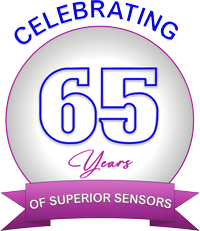Defining Your Force Sensor Application
Before selecting and buying a load pin, load cell or other force sensor, Strainsert recommends
identifying and defining your force sensor application and operating environment.
First, make sure you have answers to fundamental questions about the application:
- Will one or multiple sensors be required?
- Do you need to measure dynamic forces, static forces, or both?
- For how many axes do you want to measure force?
- Where will the sensor be fixed?
- What aspects of the force data are most important to your applications?
- What is the smallest force change the sensor should be able to measure?
Second, answer questions on the operating environment where the force sensor will be used:
- Will there be a lot of electrical or other noise?
- Are there any extremes of temperature, humidity, pressure, etc?
- Will the environment itself be subject to movement (e.g. vibrations)?
- Will the environment be clean, or will there be a large amount of dust?
Third, make sure to define and assess your resources. For example, space restrictions will
determine the maximum size of the sensor. Time restrictions will determine whether you require
a more “plug and play” type sensor. Distance or wiring specifications will prompt you to consider
wireless force sensor solutions.
Fourth, be cognizant of the number of resources you will need to or can devote to integrating the
sensor into your existing systems and what related equipment you would need to operate the
sensor and collect the data efficiently.
- How much of a budget do you have available for the sensor(s)?
- What electrical interface options can you already support?
- Do you need a force sensor with integrated electronics?
- How much time and work can you devote to the integration of the sensor?
- What are the limits for the mechanical interface and size of the sensor
Fifth, define what are absolute requirements for the application you need the force sensor for
and what other aspects can be more flexibly applied or excluded if cost, time, or resource issues
make them unrealistic.
As with many engineering decisions, choosing between different products is a balancing act.
Products with better technical specifications usually cost more. Sensors with high performance
in one specification might have low performance in another.
- Do you really need high precision, or can you accomplish your measurement accuracy with general purpose performance?
- Which specifications are vital to your application?
- Which can you live without?
A sensor’s output is proportional to its sensitivity and the load applied by the system.
Applications that require a higher factor of safety will have a lower sensitivity, or rated output, which will decrease its reading resolution. It is important to choose the point at which both factor
of safety and reading resolution are optimal.
List each specification in order of preference. Below are some standard specifications that could
be relevant for your application.
Force Measuring Range:
This is the range of force that the sensor can measure. They are often listed separately on
manufacturer datasheets. To choose this value, calculate the highest force which you will want
to measure in all directions. Don’t forget dynamic forces! These are higher than static forces and
dependent on the velocity of impact.
Safe Overload Capacity:
This is the maximum force that may be applied to the sensor without causing deformation,
damage, or requiring recalibration. Typically, the safe overload capacity is 150% of the rated
load.
Maximum Overload Capacity:
This is the yield point where plastic deformation occurs and the sensor is permanently
damaged. Typically, the maximum overload capacity (or factor of safety) is 300% of the rated
load. You really don’t want to be applying forces that are even close to this value.
Frequency/Maximum Data Output Rate:
The Maximum Data Output Rate defines the maximum sampling frequency of the sensor. This
determines how often the sensor can provide new force data. Work out which frequency you
require for your application and choose a force sensor that can supply at least this frequency.
Performance:
There are three different specifications for performance that can be applied to force sensors:
resolution, accuracy, and repeatability. The most common to see on datasheets is resolution,
which is the minimal change in force that the sensor can measure.
Sensing Technology:
There are many technologies used for measuring force, including piezoelectric, resistive, and
hydraulic. Some technologies are more suited to applications and environments than others.
Traditionally, most multi-axis force sensors use strain gauge technology.
In conclusion, the more preparation and detailed requirements that are defined prior to selecting
your force sensor, the better the results are likely to be for your application and the success of
the program. Please contact us for any of your force sensor application, specification, and
product needs.

